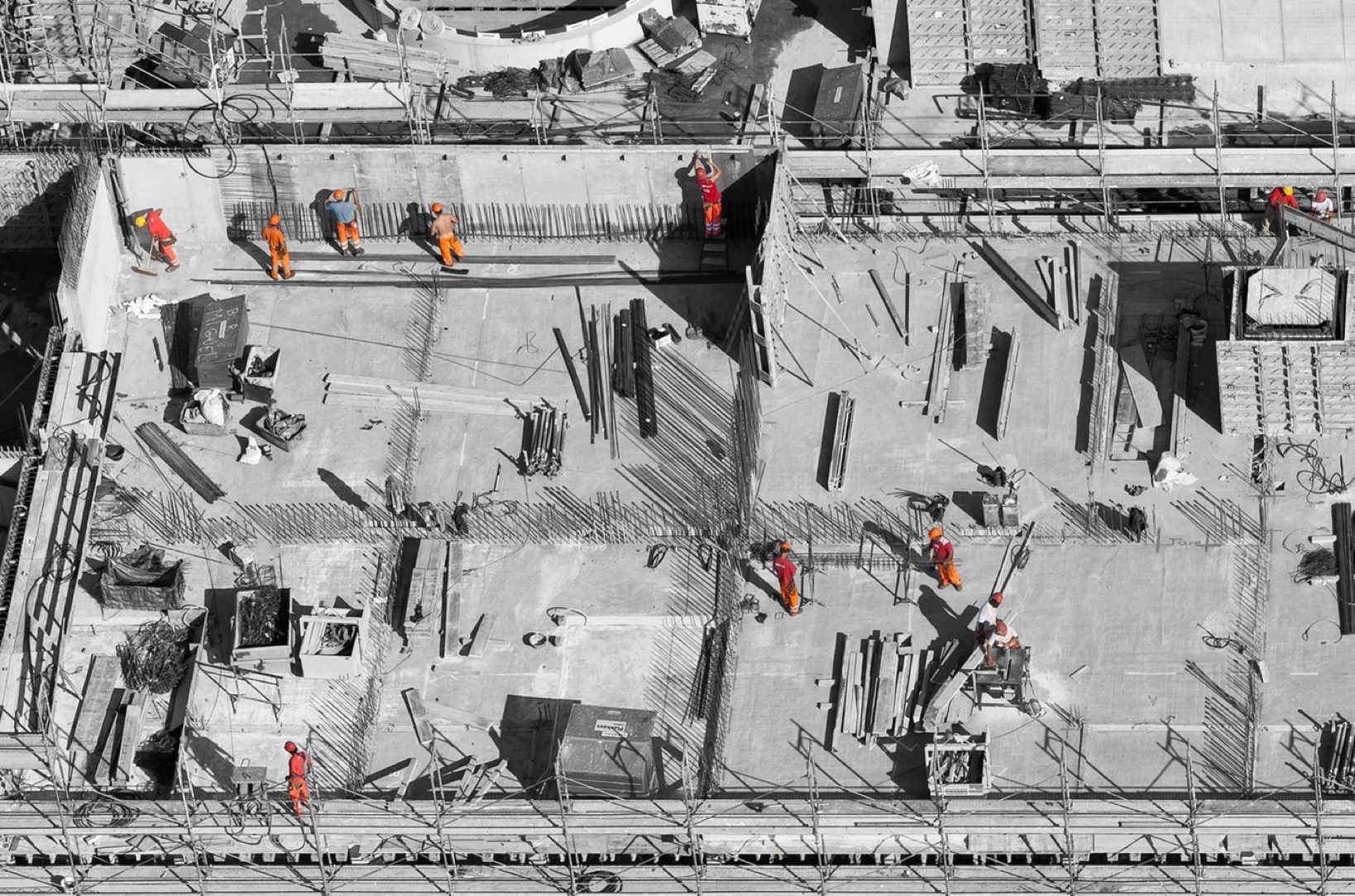Michael G. Jacobides, Arun Sundararajan, and Marshall Van Alsytne, “Platforms and Ecosystems: Enabling the Digital Economy,” World Economic Forum, February 2019, ➝.
Construction Leadership Council, Shortage occupations in construction (January, 2019), ➝.
Robin Grey, Tom Kenny, Laurie Macfarlane, Anna Powell-Smith, Guy Shrubsole, and Beth Stratford, Land for the Many, George Monbiot, ed., (June 2019), ➝.
Department for Business Innovation & Skills, UK Construction: An economic analysis of the sector (July 2013), ➝.
Such as ZHA Code at Zaha Hadid Architects, Foster & Partners’ Specialist Modelling Group, or Gehry Technologies.
Procore, a project management software company, is one of the few investment unicorns in construction.
Mario Carpo, The Second Digital Turn: Architecture in the Age of Intelligence (Cambridge: MIT Press, 2017).
Alan Colquhoun, “Frames to Frameworks,” Encounter 48 (April 1977): 41.
Sean Keller, Automatic Architecture (Chicago: The University of Chicago Press, 2017), 1.
Mario Carpo, “Breaking the Curve: Big Data and Design”, Artforum, February 2014, ➝.
Greg Lynn, Animate Form (Princeton: Princeton Architectural Press, 1999).
McKinsey Global Institute, “Reinventing construction: a route to higher productivity,” McKinsey & Company, February 2017; McKinsey Global Institute, “The construction productivity imperative”, McKinsey & Company, July 2015.
UK Research and Innovation, “Transforming construction,” ➝.
Nick Srnicek, Platform Capitalism (London: Polity Press, 2016), 9.
Construction Robotics, “SAM100,” ➝.
Katerra, “Katerra TAKE OFF 2019 | Building Platforms,” YouTube.
Salvatore Peluso, “Zaha Hadid Architects' Al Janoub Stadium represents the inequalities of our time,” DomusWeb, May 29, 2019, ➝.
Amy Frearson, “Patrik Schumacher calls for social housing and public space to be scrapped,” Dezeen, November 18, 2016, ➝.
Such as Jose Sanchez, Maria Yablonina, Gilles Retsin, Manuel Jimenez Garcia, Viola Ago, Carlo Ratti, Marcin Jakubowski, and others.
Mario Carpo, The First Digital Turn: 1992-2012 (John Wiley & Sons, 2012).
Neil Gershenfeld, Matthew Carney, Benjamin Jenett, Sam Calisch, and Spencer Wilson, “Macrofabrication with Digital Materials: Robotic Assembly,” Architectural Design 85, no. 5 (2015): 123. Current discourse on the discrete includes the work of Daniel Kohler and his ‘mereological’ quantification of urbanism to Jose Sanchez’s project to connect the discrete to participatory systems and the establishment of a new architectural commons to Gilles Retsin’s research on discrete and digital serially-repetitive tectonic systems. Philippe Morel’s work with the Computational Chair (2004) explored the potential of voxel-based systems in relationship to automated manufacturing. My fellow co-directors in Design Computation Lab at The Bartlett School of Architecture UCL, Gilles Retsin, Manuel Jimenez Garcia, and Vicente Soler are also voices exploring the potential of these ideas. See Daniel Köhler, “Large City Architecture: the mereological mode of the quantified city,” International Journal of Parallel, Emergent and Distributed Systems (2017): 32; Jose Sanchez, “Combinatorial Commons: Social Remixing in a Sharing Economy”, Architectural Design 87, no. 4 (2017): 19; Gilles Retsin “Bits and Pieces,” Architectural Design 89, no. 2 (2019): 38–45.
Daniel Kohler, The Mereological City: a reading of the works of Ludwig Hilberseimer (transcript Verlag, 2016), 9.
Retsin, “Bits and Pieces,” 41.
Having origins in the work of Walter Segal, Christopher Alexander, Richard Deitrich, and Jean Prouvé as well as other twentieth century architects.
Nick Srnicek and Alex Williams, Inventing the Future: Postcapitalism and a World Without Work (London: Verso, 2015), 9–13.
Evgeny Morozov, “Making It,” The New Yorker, January 13, 2014, ➝.
As MIT researcher Nadya Peek has pointed out, the fab lab does not enable wide participation. See Nadya Peek, Machines that Make (Ph.D. Thesis, Massachusetts Institute of Technology, School of Architecture and Planning, Program in Media Arts and Sciences, 2016).
In its last iteration in academic year 2017–2018, Unit 19 was contextualized in London, which is the context in which RC4 is now working in the academic year 2018-19.
Laboria Cuboniks, Xenofeminsm: A Politics for Alienation (2015), ➝.
Nick Srnicek and Alex Williams, Inventing the Future: Postcapitalism and a World Without Work (London: Verso, 2015), 107.
Laboria Cuboniks, “Trap,” Xenofeminsm, ➝.
